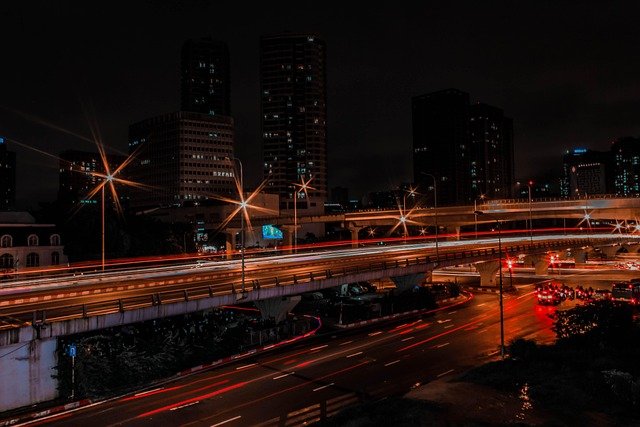LED Streetlight Market Pressures
The global LED streetlight market is crowded and competitive, offering low-cost fixtures no longer guarantees success. Photocell integration, a seemingly small component, can differentiate products, enable smart features, and justify premium pricing.
The LED streetlight industry has grown into the most competitive spaces in modern infrastructure, cities and private developers now demand not just cost-effective lighting but also durability and sustainability, lowering fixture prices is no longer enough for manufacturers to win contracts.
One of the most powerful tools for LED streetlight differentiation is the photocell, it dramatically impacts energy savings and long-term maintenance, by integrating advanced photocells, manufacturers can provide more than just a “light fixture”, they deliver an adaptable system that supports the broader goals of urban lighting innovation.
Photocells enable dusk-to-dawn operation that makes the way for smart streetlight solutions that connect to IoT networks. In a crowded market, these features let streetlights stand out, justify pricing, and meet the standards governments and businesses are now prioritizing.

1. Why Photocells Matter
A photocell, also known as an outdoor lighting controller, automatically switches streetlights ON at dusk and OFF at dawn, giving numerous benefits that align with the priorities of modern urban planning:
Dusk-to-Dawn Control Saves Energy
Energy efficiency is one of the strongest selling points for modern LED systems, by making sure lights operate only when needed, photocells reduce unnecessary electricity usage, cities running thousands of fixtures, their savings can go to millions of dollars annually.
For example, a municipality operating 50,000 LED fixtures with photocells could save yearly energy consumption up to 30% compared to timer-based systems, this also contributes to carbon reduction targets, a critical factor in today’s climate-conscious procurement decisions.
Adaptive Lighting Enhances Safety and Compliance
Streetlights aren’t just about visibility; they are about public safety. Badly lit streets can increase accidents and crime rates. Photocells improve safety by adapting to environmental conditions. On cloudy days, during storms, or in areas with heavy tree cover, photocells trigger lights earlier, making sure of consistent visibility.
Compliance is another area where photocells shine. Many regions enforce strict lighting policies tied to energy efficiency or nighttime safety. By offering photocell integration benefits, manufacturers ensure their products are policy-ready, reducing risks for buyers.
Smart Integration Enables IoT and Remote Management
Photocells are no longer simple light switches. Modern designs integrate seamlessly with smart streetlight solutions, enabling remote monitoring and energy-use analytics.
Cities adopting smart infrastructure increasingly demand streetlights that “talk” to central control systems. Photocells with IoT integration allow operators to:
- Detect outages instantly
- Dim lights during low-traffic hours
- Monitor energy use in real time
This level of intelligence transforms a basic fixture into part of a connected urban lighting innovation ecosystem, which governments and developers are eager to adopt.
2. Differentiation Strategies
In a market with low-cost LED fixtures, how can manufacturers stand out? The answer is in designing photocell-enabled systems that provide value beyond illumination.
Multi-Voltage and Multi-Standard Compatibility
Streetlights are installed across different regions, each with unique voltage requirements and socket standards. Some cities require NEMA twist-lock photocells, while others adopt the Zhaga Book 18 standard.
To achieve strong LED streetlight differentiation, manufacturers must ensure compatibility across these formats. Offering multi-voltage operation (110V–277V or 220V–480V) confirms flexibility in deployment, while universal socket options let the same fixture model serve numerous markets, this reduces the need for multiple SKUs and appeals to OEM and project buyers who prioritize future-proofing.
Programmable LUX Levels for Urban Policies
Every city has its own definition of how bright a street should be. Some may want lights to activate at 50 Lux, while others want 30 Lux or even 10 Lux thresholds. A standard photocell cannot handle these variations.
The solution lies in programmable photocells. By allowing users to adjust ON/OFF thresholds, manufacturers provide a tailored solution that meets different regulatory environments. This is one of the most attractive photocell integration benefits, as it makes fixtures adaptable to multiple projects without redesign.

Surge Protection + Dimming Functions
A growing trend in smart streetlight solutions is multifunctionality. Buyers don’t just want a photocell that switches the light on and off; they want added resilience and control.
Modern photocells can integrate surge protection to safeguard sensitive LED drivers from power spikes. Pairing this with dimming functions allows cities to reduce brightness in low-traffic hours, cutting costs without compromising safety.
The table below summarizes these differentiation features:
3. Case Studies
Case studies demonstrate how photocells create measurable value in real-world lighting projects. Below are two examples showing their transformative impact:
Urban Streetlight Project Achieving 30% Energy Savings
A European city recently upgraded 20,000 fixtures with photocell-enabled outdoor lighting controllers. Instead of relying on pre-set timers, each streetlight operated independently, responding to natural daylight.
Results:
- 30% reduction in annual energy use
- $1.2 million in cost savings per year
- Positive environmental impact with 8,000 tons of CO₂ saved annually
This project highlighted how photocells are not just accessories but critical components of LED streetlight differentiation strategies.
Industrial Area Lighting Reducing Maintenance Calls by 40%
In an Asian industrial park, lighting failures often disrupted night-shift operations, the issue stemmed from low-quality photocells that failed in harsh conditions.
By switching to premium photocells with IP67 sealing, surge protection, and programmable LUX thresholds, the operators achieved:
- 40% fewer maintenance calls
- Longer lifespan for LED fixtures
- Safer working conditions at night
This case showed that photocell integration benefits go beyond energy savings, they also reduce labor and operational costs.
Takeaway
The global LED streetlight market is more competitive than ever, and success requires more than offering a basic, low-cost fixture. Photocells give manufacturers the edge they need by delivering automation and smart functionality, By adopting strategies like multi-standard compatibility, programmable LUX thresholds, and integrated surge protection, manufacturers create products that rise above commodity competition. Case studies from cities and industrial parks further prove the financial, environmental, and safety benefits of photocell adoption.
In short, integrating outdoor lighting controllers into streetlights isn’t just an engineering choice, it’s a business strategy. It ensures smart streetlight solutions, supports urban lighting innovation, and drives real LED streetlight differentiation in a crowded market.
For lighting brands and OEMs, the message is clear: photocells are no longer optional. They are the key to standing out, winning contracts, and shaping the cities of tomorrow.
Interested in technical datasheets or custom photocell integration benefits? Contact Lead-Top for tailored smart streetlight solutions today.
References







